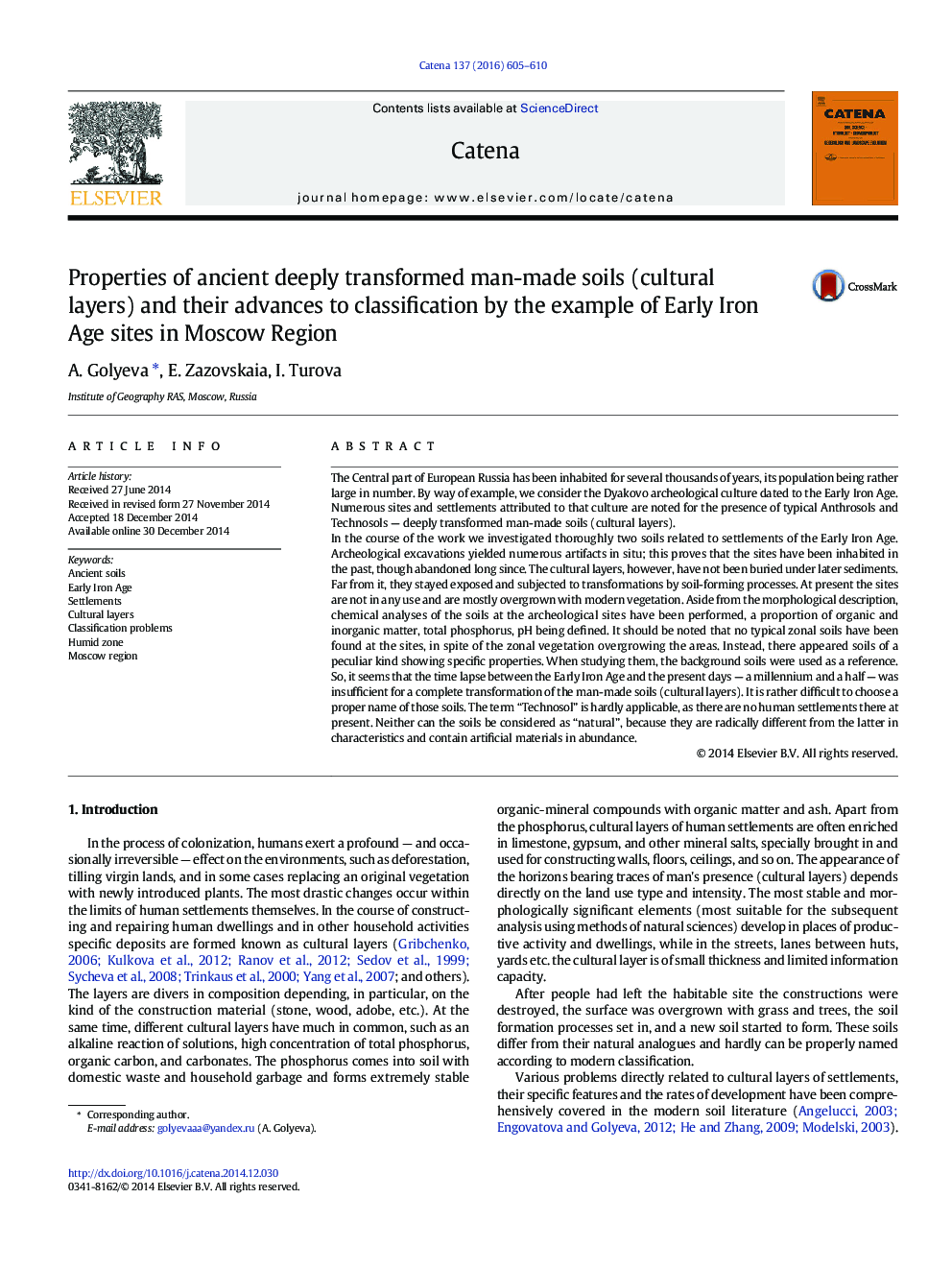| Article ID | Journal | Published Year | Pages | File Type |
|---|---|---|---|---|
| 6408032 | CATENA | 2016 | 6 Pages |
â¢We investigated thoroughly two soils related to Iron Age settlements.â¢The settlements have been inhabited in the past, though abandoned long since.â¢At present these places are not in any use and are overgrown with modern vegetation.â¢Cultural layers stayed exposed and save their specific properties.â¢We pay attention to the problems to classification of these soils.
The Central part of European Russia has been inhabited for several thousands of years, its population being rather large in number. By way of example, we consider the Dyakovo archeological culture dated to the Early Iron Age. Numerous sites and settlements attributed to that culture are noted for the presence of typical Anthrosols and Technosols - deeply transformed man-made soils (cultural layers).In the course of the work we investigated thoroughly two soils related to settlements of the Early Iron Age. Archeological excavations yielded numerous artifacts in situ; this proves that the sites have been inhabited in the past, though abandoned long since. The cultural layers, however, have not been buried under later sediments. Far from it, they stayed exposed and subjected to transformations by soil-forming processes. At present the sites are not in any use and are mostly overgrown with modern vegetation. Aside from the morphological description, chemical analyses of the soils at the archeological sites have been performed, a proportion of organic and inorganic matter, total phosphorus, pH being defined. It should be noted that no typical zonal soils have been found at the sites, in spite of the zonal vegetation overgrowing the areas. Instead, there appeared soils of a peculiar kind showing specific properties. When studying them, the background soils were used as a reference.So, it seems that the time lapse between the Early Iron Age and the present days - a millennium and a half - was insufficient for a complete transformation of the man-made soils (cultural layers). It is rather difficult to choose a proper name of those soils. The term “Technosol” is hardly applicable, as there are no human settlements there at present. Neither can the soils be considered as “natural”, because they are radically different from the latter in characteristics and contain artificial materials in abundance.
